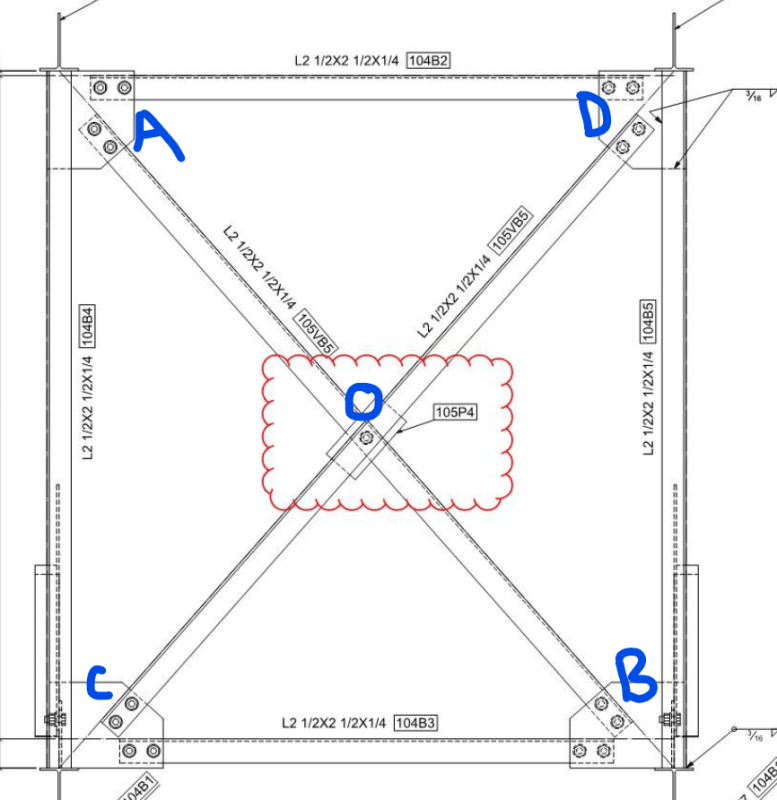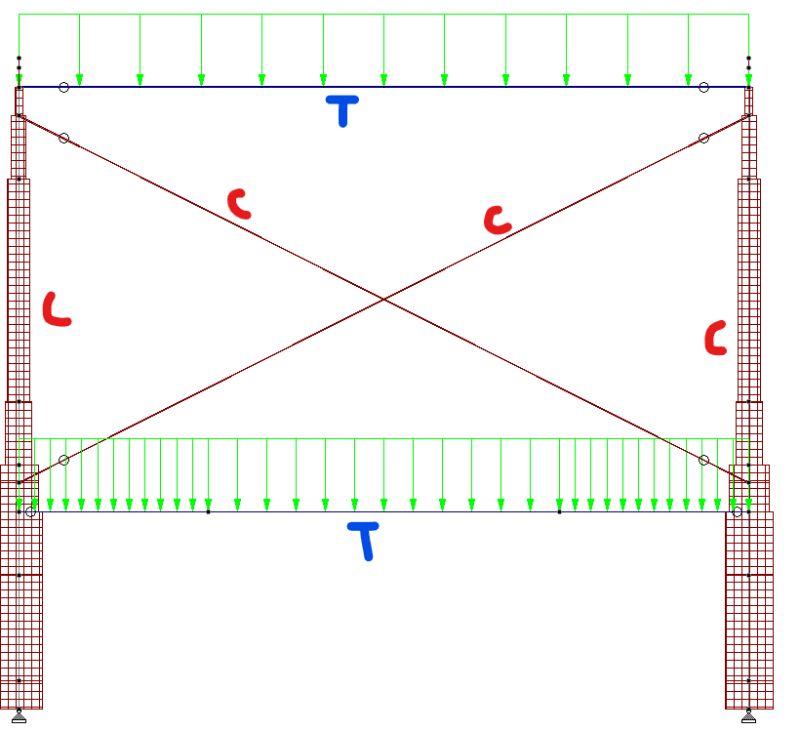BendingMoment123
Structural
Hi all
In case 1, both members are in compression. In case 2, both members are in tension.
What would the effective lengths in respect of the angle's principal axes be (Lz = minor axis and Lv = major axis) for the following single angle x-brace connection?:

Thank you
In case 1, both members are in compression. In case 2, both members are in tension.
What would the effective lengths in respect of the angle's principal axes be (Lz = minor axis and Lv = major axis) for the following single angle x-brace connection?:

Thank you

